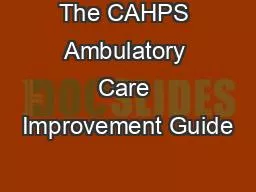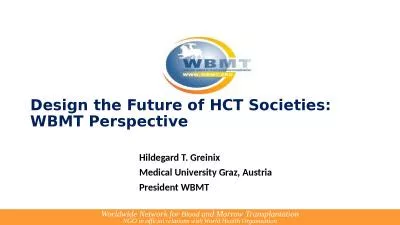PPT-"Implementing High-Value Care with Ambulatory Costs Transparency (HCT): Improving Provider
Author : singh | Published Date : 2024-01-29
Matthew Ellis pgy3 Wake forest Baptist Internal medicine Background In 2020 about 31 million uninsured Americans relied on health system policies that would reduce
Presentation Embed Code
Download Presentation
Download Presentation The PPT/PDF document ""Implementing High-Value Care with Ambul..." is the property of its rightful owner. Permission is granted to download and print the materials on this website for personal, non-commercial use only, and to display it on your personal computer provided you do not modify the materials and that you retain all copyright notices contained in the materials. By downloading content from our website, you accept the terms of this agreement.
"Implementing High-Value Care with Ambulatory Costs Transparency (HCT): Improving Provider: Transcript
Download Rules Of Document
""Implementing High-Value Care with Ambulatory Costs Transparency (HCT): Improving Provider"The content belongs to its owner. You may download and print it for personal use, without modification, and keep all copyright notices. By downloading, you agree to these terms.
Related Documents











![[DOWNLOAD] Ambulatory Care Nursing Exam Secrets Study Guide: Ambulatory Care Nurse Test](https://thumbs.docslides.com/1007625/download-ambulatory-care-nursing-exam-secrets-study-guide-ambulatory-care-nurse-test-review-for-the-ambulatory-care-nursing-exam.jpg)


